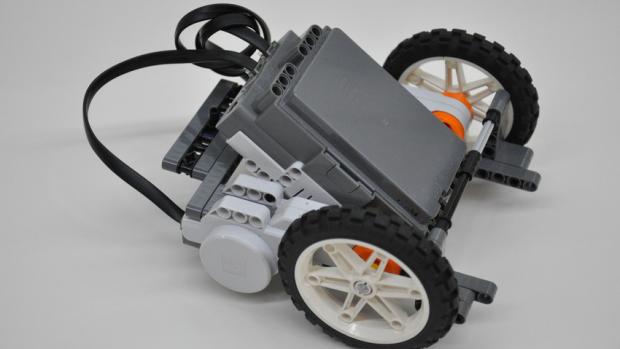NYU Polytechnic School of Engineering Researchers Make Innovative Use of LEGO
Division of the American Society for Engineering Education Honors Paper Showing Middle School Teachers How to Use Robots for Lessons

With even preschoolers using computers and video games, students at all levels now expect to modify and control their own experiments and receive immediate feedback. Responding to that trend, a trio of New York University Polytechnic School of Engineering researchers has developed a wheeled mobile robot and accompanying lesson plans for middle school teachers.
The project provides a compelling hook to engage student interest in math and science and brings new meaning to classroom concepts by connecting them to real-world applications.
Their paper, “Exposing Middle School Students to Robotics and Engineering through LEGO and MATLAB,” garnered the 2014 Ray H. Spiess Award from the Computers in Engineering Division (CoED) of the American Society for Engineering Education (ASEE). The honor--named for the founder of a company that for decades manufactured analog computers popular in classrooms—is given annually to the outstanding CoED Journal paper on mobile teaching aids and computation techniques.
The paper is written by doctoral candidate Jeffrey Laut, Professor of Mechanical Engineering Vikram Kapila, and Professor of Civil and Urban Engineering Magued Iskander. The three employed the LEGO NXT system to construct a mobile robot consisting of two non-steerable, powered wheels and one castor wheel. The robot uses a Bluetooth connection to transmit wheel rotation data to a computer base station running the MATLAB program (a high-level language and interactive environment widely used by engineers and scientists), which graphically represents the motion of the robot in real time.
They then used the hardware-software platform to create and implement several lessons illustrating the real-world applications of concepts from middle school curriculum, including the effect of wheel diameter on forward velocity, measuring and mapping space, and understanding odometry. Pre- and post-assessments administered to students who were exposed to the robotics-based activity demonstrated a significant increase in knowledge, suggesting that the addition of robotics-based activities to traditional classroom instruction can have measurable value.
“Our approach helps develop students’ abilities in solving real-world problems related to their classroom learning,” said Kapila, who, as an integral figure at the university’s Center for K-12 STEM Education, currently directs training, mentoring, and outreach programs that enrich the STEM (Science, Technology, Engineering and Mathematics) education of more than 1,100 students and dozens of teachers each year. “Introducing students to engineering and technology offers a means to engage those who may otherwise be uninterested in science or math, but find their curiosity piqued by applying science and math concepts to actual challenges they may one day face.”
“In every era, educators have used available technology, whether it be abacus or electronic kits,” said Iskander, who is also one of the core members of the Center for K-12 STEM Education. “Although past generations of students have learned STEM concepts without robotics, we now live in an age in which most students are immersed in modern technology, and this new curriculum reflects that fact. It is deeply gratifying to have the value of our work affirmed by ASEE.”
The research paper is available by subscription here.




